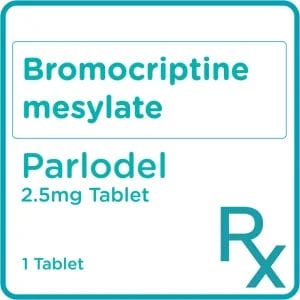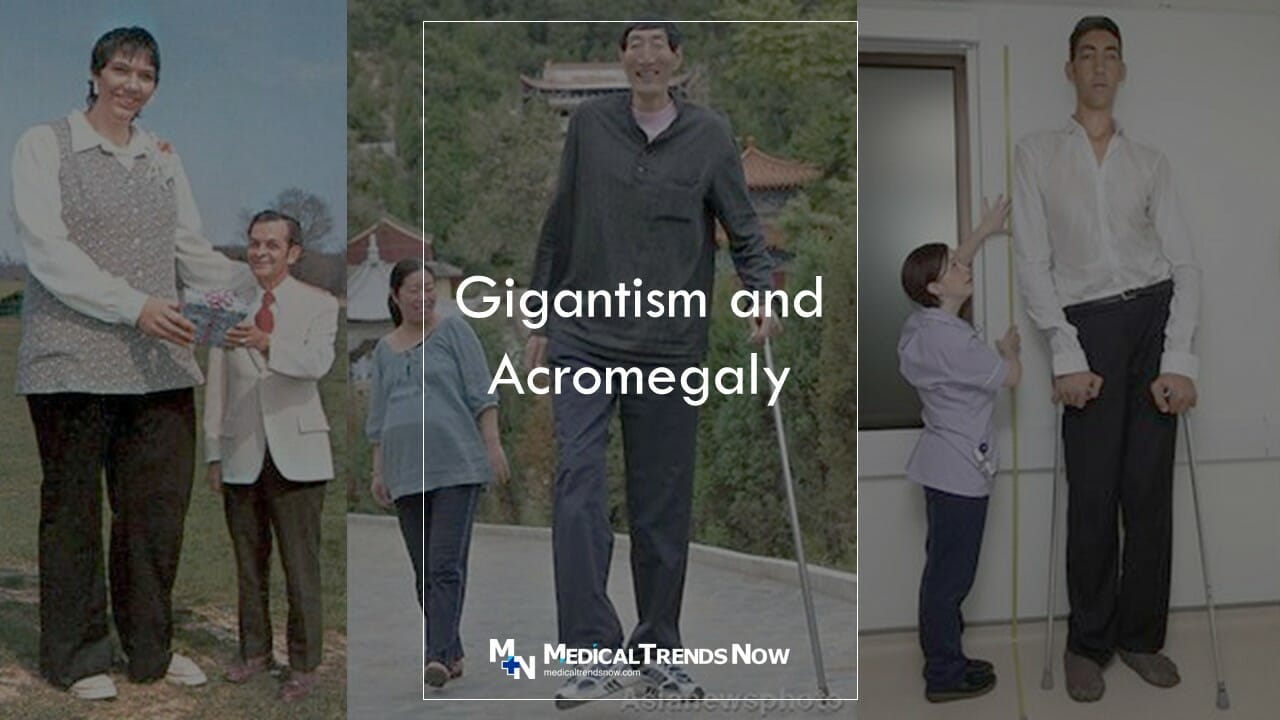Table of Contents
Gigantism and acromegaly are rare but serious diseases that can affect both children and adults. It is caused by the excess production of hormones, such as cortisol and growth hormone, in the body. The symptoms of gigantism vary from person to person, depending on what glands are affected.
What are Gigantism and Acromegaly?
Are Gigantism and Acromegaly the same? Here are the differences and similarities.
What is Acromegaly?
Acromegaly is a rare condition that occurs when the body produces too much growth hormone. It can happen at any age but is most commonly diagnosed in middle-aged adults. Acromegaly can cause a number of health problems, including heart disease, diabetes, and high blood pressure. Treatment for acromegaly typically involves medication and surgery.
What is Gigantism?
Gigantism is a rare condition that occurs when the body produces too much growth hormone during childhood. This results in excessive growth and a taller-than-average height. Gigantism is usually diagnosed before puberty, and treatment typically involves surgery to remove the pituitary gland.

Gigantism and Acromegaly Close Relation
Gigantism is commonly known as Acromegaly (but they differ). It is a type of hormonal disorder in the pituitary gland where there is excessive production of growth hormones in adulthood. In the case of children, this overproduction is termed Gigantism.
Your bones enlarge in size when you have an excess of growth hormone. This results in gigantism in children, which causes them to grow taller. A change in height, however, does not take place as people age. Acromegaly, which refers to an increase in only your hands, feet, and facial bones, is the preferred term for this condition.
It can take some time to diagnose acromegaly because it is a rare disorder and the physical changes take place gradually over several years. In addition to growing your bones, high levels of growth hormone can have negative effects on other body parts if left untreated. Serious health issues may result from this; in some cases, they may be life-threatening. Treatment, however, can greatly improve your symptoms, including the growth of your features, while lowering your chance of problems.
What is the Difference Between Gigantism and Acromegaly?
Gigantism and Acromegaly are two separate conditions that are often confused. Gigantism is a condition that results in excessive growth during childhood, while Acromegaly is a condition that results in excessive growth during adulthood. While both conditions can result in abnormal growth, the cause and treatment of each condition are different.
When you have an excess of growth hormone, your bones grow in size. This causes increased height in childhood and is known as gigantism. A change in height does not occur in adulthood. Instead, acromegaly refers to an increase in bone size that is limited to the bones of your hands, feet, and face.
Gigantism is a condition that results in abnormal growth. Acromegaly is a condition that results in abnormal growth of the extremities and face. The gigantism and acromegaly conditions are similar, but there are some important differences. Gigantism is typically caused by a tumor on the pituitary gland, while acromegaly is typically caused by a tumor on the adrenal gland. Gigantism usually occurs in childhood, while acromegaly usually occurs in adulthood.

Causes Of Gigantism
When the pituitary gland consistently and excessively produces growth hormone (GH), acromegaly develops.
At the base of your brain, behind the bridge of your nose, is a little gland called the pituitary gland. It makes GH, as well as several other hormones. GH is crucial in controlling your physical development.
IGF-1, also known as insulin-like growth factor-I or IGF-I, is a hormone that your liver produces in response to the pituitary gland’s release of GH into your bloodstream. Your bones and other tissues grow as a result of IGF-1. Too much GH causes too much IGF-1, which can result in the signs, symptoms, and problems of acromegaly.
In adults, a tumor is the most common cause of too much GH production:
A noncancerous (benign) tumor (adenoma) of the pituitary gland is the primary factor in the majority of cases of acromegaly. Many of the acromegaly symptoms and signs are brought on by the tumor’s excessive growth hormone production. When a tumor presses on surrounding brain structures, it can cause symptoms of acromegaly, including headaches and blurred vision.
Acromegaly is occasionally brought on by malignancies in other organs like the pancreas or lungs. These tumors can occasionally release GH. In some instances, the pituitary gland receives a signal from the tumors to increase GH production through the release of a hormone called growth hormone-releasing hormone (GH-RH).
Warning Signs Of Gigantism And Acromegaly: What To Do If You Notice Them?
Acromegaly frequently manifests as larger hands and feet. You might observe, for instance, that previously-fitting rings no longer fit and that your shoe size has gradually increased.
Acromegaly can also result in gradual changes to the appearance of your face, such as a protruding lower jaw and brow bone, a widened smile, thicker lips, and a larger nose.
Early symptoms of acromegaly may not become apparent for years because of its tendency to progress slowly. Sometimes, people can only detect bodily changes by contrasting older and more recent images.
In general, the signs and symptoms of gigantism and acromegaly might vary from person to person and may include any of the following:
- The hands and feet are larger
- Enlarged facial features, such as the lips, nose, tongue, and facial bones
- Thickened, coarse, and greasy skin
- Sweating excessively and bad body odor
- Little skin tissue growths (skin tags)
- Joint or muscle weakness and exhaustion
- Limited joint motion and discomfort
- Thickened, husky voice brought on by larger sinuses and vocal cords
- Severe snoring brought on by a blocked upper airway
- vision issues
- Headaches that could be severe or chronic
- Women’s irregular menstrual cycles
- Male erectile dysfunction
- loss of sex enthusiasm
If you notice any of these signs, it is important to consult a doctor as soon as possible to rule out potential causes and get started on treatment.

How To Treat Gigantism?
Treatment for acromegaly depends on the patient. The location and size of the tumor, the intensity of symptoms, age, and general health will all likely have an impact on your treatment options.
Treatment options often involve surgery or radiation to remove or minimize the size of the tumor that is causing your symptoms, as well as medicines to help balance your hormone levels in order to help lower your Growth hormone (GH) and IGF-1 levels.
1. Medications
Hormone-lowering medications (dopamine agonists).
Some patients may benefit from using the oral drugs cabergoline and bromocriptine (Parlodel) to reduce their levels of GH and IGF-1. These medicines might also aid in reducing the size of tumors. These drugs typically require high doses to treat acromegaly, which raises the possibility of side effects. Nausea, vomiting, runny nose, fatigue, disorientation, difficulty sleeping, and mood swings are typical adverse effects of these medications.

Somatostatin, a brain hormone, blocks the generation of growth hormones in the body. Man-made (synthetic) somatostatin is available as the medicines octreotide (Sandostatin) and lanreotide (Somatuline Depot). A pituitary tumor’s size may even be reduced by using one of these medications, which instructs the pituitary gland to make less GH. A healthcare professional often administers these medications by monthly injection into the gluteal muscles in your buttocks.
Drugs to prevent GH action (growth hormone antagonist).
Pegvisomant (Somavert), a medicine, prevents GH from acting on the tissues of the body. People who haven’t had excellent results with prior therapies may find Pegvisomant to be very beneficial. This medicine, administered as a daily injection, can aid in reducing IGF-1 levels and relieving symptoms, but it has no effect on GH levels or tumor size.
2. Surgery
Transsphenoidal surgery is a procedure used by doctors to remove the majority of pituitary tumors. To remove the tumor from your pituitary gland, your surgeon will do this procedure through your nose. Your doctor would advise a different form of surgery to remove the tumor if it is not on your pituitary gland and is the cause of your symptoms.

In many instances, especially if your tumor is small, getting rid of it will bring your GH levels back to normal. Tumor removal may also help with headaches and vision disturbances if the tumor was placing pressure on the tissues surrounding your pituitary gland.
Your surgeon might not be able to remove the entire tumor in some circumstances. You might continue to have elevated GH levels following surgery if this is the case. Your doctor might suggest more surgery, drugs, or radiation treatments.
3. Radiation
Your surgeon might suggest radiation therapy if he or she was unable to completely remove the tumor during surgery. Radiation therapy gradually lowers GH levels and eliminates any remaining tumor cells. Years may pass before this treatment makes a discernible difference in the symptoms of acromegaly.
In addition to GH, radiation therapy frequently reduces the levels of other pituitary hormones. You’ll probably need frequent follow-up appointments with your doctor after the radiation therapy to make sure your pituitary gland is functioning properly and to check your hormone levels. You might require this ongoing treatment for the rest of your life.

Radiation therapy comes in these forms:
- Stereotactic radiosurgery – In stereotactic radiosurgery, a high radiation dose is given to the tumor cells while the radiation exposure to healthy surrounding tissues is kept to a minimum. Usually, it can be given in a single dose. Within five to ten years, this kind of radiation may return GH levels to normal.
- Conventional radiation therapy – Typically, this sort of radiation therapy is administered daily during the week for four to six weeks. Conventional radiation therapy may take up to ten years or longer to take full effect.
Other Conditions That Can Affect Growth In Children
Growth in children can be affected by a number of conditions, some of which are more common than others. Some of the more common conditions that can affect growth in children include malnutrition, underweightness, genetic disorders, and diseases such as cancer. All of these conditions can lead to shorter growth spurts and a smaller overall body size.
Ways To Prevent Gigantism and Acromegaly In Children
Gigantism is a disorder in which a child’s body grows much larger than average, leading to health problems. Some possible ways to prevent gigantism include:
- Helping your child maintain a healthy weight throughout their life by eating a balanced diet and exercising regularly.
- Limiting the amount of screen time your child spends each day, as screen time has been linked with obesity and other health problems.
- Providing your child with regular physical activity, such as participating in organized sports or playing outdoors.
- Treating any underlying medical conditions that may be contributing to the growth of your child’s body.
Which Doctor Can Treat Gigantism and Acromegaly?
Gigantism and acromegaly are two different conditions that can cause abnormal growth. Gigantism is a condition that affects children and teens who are still growing. Acromegaly is a condition that affects adults. Both conditions are caused by too much growth hormone in the body.
If you or your child has gigantism or acromegaly, you will need to see an endocrinologist. An endocrinologist is a doctor who specializes in treating conditions that involve hormones. Endocrinologists have the training and experience to diagnose and treat gigantism and acromegaly.
If you have gigantism, treatment will involve taking medication to lower your level of growth hormone.
If surgery is required, then you will need to consult with neurosurgeons, otolaryngological (ENT) surgeons, or neuroendocrinologists.
Takeaway: Gigantism and Acromegaly
In conclusion, with proper treatment, gigantism and Acromegaly can either be managed, treated, or prevented.
If you think your child may be experiencing symptoms of gigantism and acromegaly, please consult with a doctor. In some cases, surgery may be necessary to prevent health problems from developing.
Sources: Gigantism and Acromegaly
- Acromegaly – Mayo Clinic
- Gigantism and Acromegaly – Endocrine and Metabolic Disorders – MSD Manuals
- Acromegaly | NIDDK
- Gigantism And Acromegaly – StatPearls – NCBI Bookshelf
- Acromegaly: What It Is, Causes, Symptoms & Treatment – Cleveland Clinic
- Gigantism: What It Is, Causes, Symptoms & Treatment – Cleveland Clinic
- Gigantism: MedlinePlus Medical Encyclopedia
- Acromegaly and Gigantism – Conditions – Pituitary Program – University of Rochester Medical Center Rochester
- Acromegaly – NHS
Disclaimer
This website is intended to educate both members of the general public and those working in the medical field on the prevalence, causes, and methods for preventing, diagnosing and treating diseases that affect people throughout their lives. This website’s content is provided solely for informational reasons and is not meant to serve as a substitute for the advice of a qualified medical practitioner.













